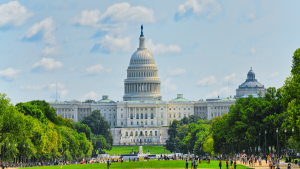
The original SECURE ACT was passed into law in December of 2019 way back when we could go to movie theaters. Flash forward 10 months and the chairman, Rep. Richard Neal (D-MA) and ranking member, Rep. Kevin Brady (R-TX), of the powerful U.S. House Ways & Means Committee have introduced a sequel to the SECURE Act – “Securing a Strong Retirement Act of 2020” aka SECURE Act 2.0.
The new 132-page bill includes some 36 provisions addressing everything from expanding coverage and increasing retirement savings, to preservation of income, simplification and clarification of retirement plan rules, to technical and administrative provisions.
According to a summary, some of the most relevant pieces of the legislation to 401k plan sponsors would be:
- expand automatic enrollment in retirement plans by enrolling employees automatically in their company’s 401(k) plan when a new plan is created;
- modify the credit for small employer pension plan startup costs;
- increase and “modernize” the existing Saver’s Credit for contributions to a retirement plan or IRA (the bill would create a single credit rate of 50%, would increase the maximum credit amount from $1,000 per person to $1,500, and would increase the maximum income eligibility amount);
- allow a higher catch-up limit to apply at age 60 (from 2020’s $6,500 to $10,000), providing more flexibility for older individuals to set aside savings as they approach retirement;
- increase the required minimum distribution age to 75;
- allow individuals to receive an employer match in their retirement plans for paying down a student loan;
- provide a safe harbor for corrections of employee elective deferral failures;
- reduce the excise tax on certain accumulations in qualified retirement plans;
- expand the Employee Plans Compliance Resolution System (allowing more types of errors to be corrected internally through self-correction, and exempt certain failures to make required minimum distributions from the otherwise applicable excise tax); and
- make it easier for employees to find lost retirement accounts by creating a national, online, database of lost accounts (to be managed by the Pension Benefit Guaranty Corporation (PBGC)).
- expand retirement savings options for non-profit employees by allowing 403(b) plans to join together to offer retirement plans to their employees in multiple employer plans (MEPs);
Paper Pushers
The bill also includes a clarification—some would see it as a step backwards—of the Department of Labor’s recently finalized electronic delivery rule. Rather than requiring only an initial notice of a paper delivery option, the bill would amend ERISA to generally provide that with respect to 401k plans, unless a participant elects otherwise, the plan is required to provide a paper benefit statement at least once annually. The summary notes that the other three quarterly statements required under ERISA are not subject to this rule and can be provided electronically.
What’s Next?
When the SECURE Act was enacted last December, it was folded into an end-of-year spending bill. A similar scenario could happen this year, as Congress will need to reconvene in a lame-duck session to extend the government’s funding beyond the current temporary measure that runs only through Dec. 11. However, it’s not clear whether this bill will have the same level of bipartisan support and what the overall appetite will be after the elections to act on additional legislation beyond funding the government. As it is, Congress and the Trump administration have had a hard-enough time reaching consensus on a follow-up COVID-19 relief bill.
We are in the process of gathering final implementation details of the electronic delivery rule and look forward to helping clients implement them. As we do with all legislative proposals we will continue to monitor the developments, play an active role in voicing our opinions on the Hill and if passed into law we will help plan sponsors and participants adjust and benefit accordingly.